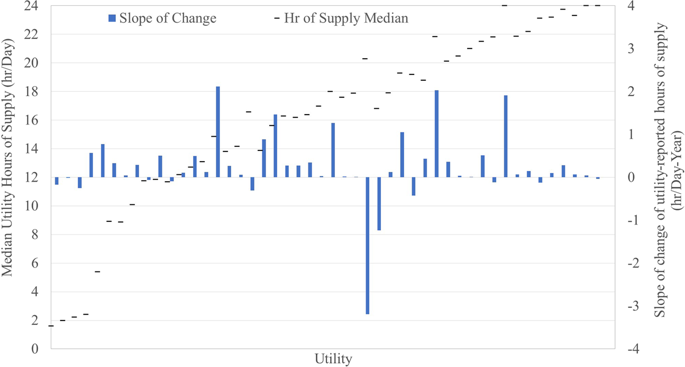npj Clean Water ( IF 10.4 ) Pub Date : 2020-03-12 , DOI: 10.1038/s41545-020-0053-y Farah Rawas , Rob Bain , Emily Kumpel

|
Piped water supplies that deliver water only intermittently serve more than one billion people around the world. Measuring the continuity of these intermittent water supplies (IWS) is necessary for tracking utility performance and understanding the impact on consumers. We compared reporting of IWS continuity between utility benchmarking data on hours of water supply and households’ reports of water outages in piped systems in Peru. Nationally, the estimated population with IWS as reported by households (23–26%) was slightly higher than that reported by utilities (20–21%) from 2010 to 2014. While the national population with IWS was markedly similar between both measures, household- and utility-reported IWS matched in only 2 of the 23 regions of Peru. We examined the influence of varying thresholds of water supply continuity on the results. Our findings highlight a need to reconcile different approaches to monitoring piped water supply continuity.
中文翻译:

将公用事业部门报告的自来水供应小时数与家庭体验进行比较
仅间歇性地提供水的自来水供应服务于全球超过10亿人口。测量这些间歇供水(IWS)的连续性对于跟踪公用事业的绩效并了解对消费者的影响是必要的。我们在供水小时数的公用事业基准数据与秘鲁管道系统中家庭停水报告之间比较了IWS连续性的报告。在全国范围内,2010年至2014年,按住户报告的IWS估计人口(23–26%)略高于公用事业部门报告的估计人口(20–21%)。尽管两项措施之间的全国IWS人口显着相似,但住户-和公用事业报告的IWS在秘鲁的23个地区中只有2个匹配。我们检查了供水连续性阈值变化对结果的影响。











































 京公网安备 11010802027423号
京公网安备 11010802027423号